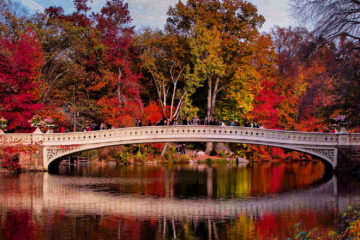Beaches are often nondescript, featureless expanses of sand and endless water without an apparent focal point. With no obvious visual fixture, the scene might leave a photographer confused and viewer of the image bored and uninterested. Locating a conspicuous geological feature, rock, tree, tidal creek, piece of driftwood, or serendipitous conch shell to use as a foreground object can provide a necessary visual anchor that makes for a more compelling image.
Experiment with Shutter Speeds
The ocean is a dynamic body of water, heaving and churning with the ebb and flow of each and every wave. Photography is an interpretative art form, so the shutter speed you choose will greatly influence both the look and feel of the scene to potential viewers.
For example, a shutter speed of 1/250 of a second or faster can freeze the water’s motion, projecting a feeling of power or urgency. Any shutter speed of one second or slower can tame even the most furious ocean swells and ascribe a certain grace or fragility to the sea. Extremely long exposures of 30 seconds to several minutes can smooth out the ocean’s swells creating a much more simplified or minimalist interpretation. Unless you are out very early or late with low light conditions, you will need neutral density filters to help absorb some of the incoming light which will allow exposures this long.
A range of 1/20 to ½ of a second with an advancing or receding waves or foam is a good compromise, giving water the illusion of motion yet retaining important detail as well. The focal length, physical distance, and water’s velocity will all vary the visual effect of the wave’s movement for each shutter speed, so the examples cited above are merely rough guidelines. I think it’s important to experiment with a variety of speeds before ultimately deciding on what you prefer for each situation.
Look for Reflections
As mentioned earlier, beaches can seem featureless with little “working material” to assist in assembling a composition. Reflections in wet sand and tidal pools, however, can add some interest and depth to an otherwise ordinary scene.
Tidal pools and puddles can reflect the sky or clouds like a mirror if there’s little or no wind and the thin film of water left on the sand by a receding wave produces reflections that can be impressionistic and expressive.
Patterns and Textures
Wind and water can conspire to create captivating dunes, mini dunes, ripples, ridges, and basins in the sand. These features can be used as a component of a larger, expansive scene or they can become the primary subject themselves. Look for conditions created by low-angled, directional lighting where the verge of light and shadow add yet more compositional elements with which to work.
These conditions can be difficult to visualize under flat or direct midday light. But when the angle of the sun in lower on the horizon, the textures, patterns, and lines will reveal themselves. Work quickly, as the light and shadows will be fleeting.
Arrive Early – Stay Late
Arrive early and stay late should be mandatory advice for any landscape photographer – coastal or otherwise. But does the world really need yet another photograph of the sun setting or rising over the ocean? My short answer would be, “Sure, why not?”
I prefer to bracket and blend exposures in post-processing for sunrise or sunset scenes that need usable detail in both the sky and foreground, but the level, unobstructed horizons are ideal graduated neutral density filters as well.
But if beauty for beauty’s sake is too banal for your tastes, you still have the twilight wedge, dawn or dusk’s glow, and low-angled, warm sunlight during the golden hours to compliment the landscape. Snobbery is no excuse for sleeping in.
Protect Your Gear
The best advice for keeping your gear looking and working like new: Take someone else’s camera to the beach.
Seriously, the saltwater, sand, and wind can run roughshod on your camera gear. Even if the camera is not actually submerged, saltwater spray and mist from the pounding surf can do damage over time. I always wipe down my camera and lenses with a damp, freshwater towel and let dry.
Tripods can become corroded and completely inoperable if the legs are submerged in saltwater. Since I cannot resist getting into the water, I carry an old, backup tripod on my coastal excursions and just go for it. It’s still a good idea to rinse off the sand and saltwater off the tripod legs when you are finished shooting to extend its life as much as possible.
Get Wet
Despite the previous point of advice, it often helps to get your feet and tripod wet in order get an interesting perspective. Wading into the water and getting a low angle to onrushing waves can provide a unique viewpoint while vicariously injecting the viewer into the scene.
Waves can move the sand and tripod during long exposures, often resulting in soft images. For this reason, I push the tripod legs as deep into the sand as possible before an incoming wave arrives. This usually stabilizes the tripod and camera sufficiently.







